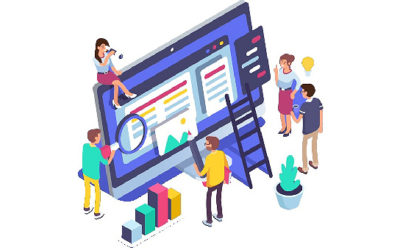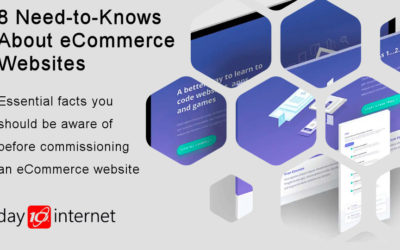Is this the first question a prospective website developer should ask you?
No. The first question should be “what do you want a website to do for you?”. Or in other words what are your business goals for the site? However, to get a better insight into this it is useful to understand what types of website there are. That’s the purpose of this article.
Most websites fall into one of three categories. In reality there are many other types of site but the three that I describe here cover the requirements of the majority of small businesses.
1. eCommerce Site.
I’ll deal with this one first because it’s the easiest to understand.
The goal is simple; sell products or services. An eCommerce site has two components. The part that customers see, i.e. the online shop displaying all the products, the shopping cart holding the customers’ selections, and the checkout facility. And then the administrators’ part, only accessible via a login. This is for the shop owner to manage the site; add new products, remove old ones, manage orders, manage stock etc.
How do you attract visitors to an eCommerce site? As I have said in a previous article, I believe the best way is to use paid for search – i.e. Google Adwords.
eCommerce sites are not cheap but you can minimize the cost by adding products yourself using this administrators’ area of the site.
2. Brochure Site.
The purpose of the brochure site is simply to showcase the business in the best possible light. As the name suggests, it is the online equivalent of a company brochure. However, being online it can show much more than a paper brochure can by using, features such as image galleries, video, and audio to demonstrate what the business can do.
In reality, most small business websites are brochure sites even if they are fairly large sites. Many brochure sites will attract some visitors from search engine listings, and most usually have a feedback form to capture leads. This can fool people into thinking they’ve got a lead generation site, but it is a mistake to think that a brochure site can every become the main source of leads for a business.
3. Lead Generation Site.
The purpose of this site is to convert visitors into leads. As such these sites are specifically designed to channel visitors through a “sales funnel” to a point where they decide they want to make a genuine enquiry. The design involves a carefully crafted home page, inner landing pages, and contact pages. Calls to action are normally included at each stage to move visitors through to the next stage in the “sales funnel”. Achieving optimal visitor conversion with these sites involves careful testing and tuning over a period of time.
Visitors to lead generation sites are typically driven from various sources such as search engines, blog articles, newsletters, social media, and more. So development of lead generation sites normally includes provision of these services.
So what type of website do you want? It’s probably pretty clear if you business is to sell online. But what if you’re aiming to use the Internet to generate customer leads? Budget will be constraint. If you want a full blown lead generation engine, then this will not be cheap. There will be an upfront development cost and then an ongoing cost for maintenance and marketing; plus you will also need to put in effort yourself, particularly on the marketing aspects.
At the end of the day, you get what you pay for. If you think you can pay a few hundred pounds for a website and it will be the main source of business leads, then you will be disappointed.






